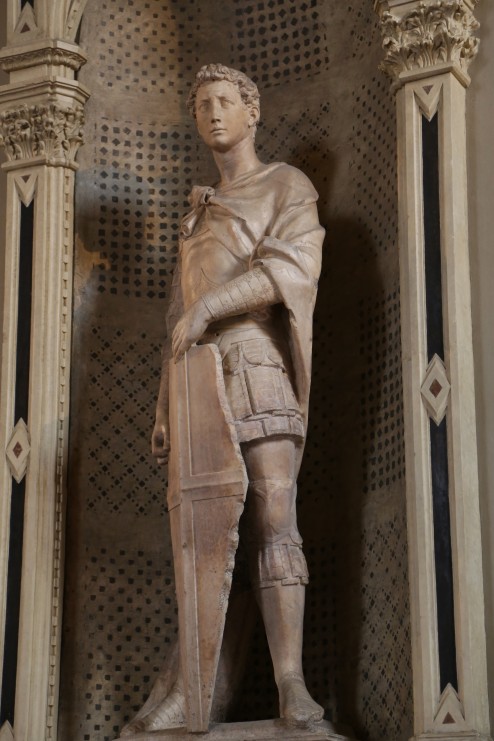Tuesday, 30 April 2024
Rural fraud on the Isle of Wight in the 1260s
Farm life near Durham in the later middle ages
How to be a Good Shepherd in the middle ages
Monday, 29 April 2024
The grave of Cerdic
Treasures from the household of Queen Henrietta Maria
Friday, 26 April 2024
Healthy exercise in the middle ages
Thursday, 25 April 2024
King Edward II

Wednesday, 24 April 2024
Anticipating Oriel
Tuesday, 23 April 2024
Donatello’s St George


Saint George (Donatello) from Wikipedia, Saint George, Donatello’s St. George, St George by DONATELLO and St George and the Dragon by DONATELLO from WebGallery of Art, Saint George and Donatello, Saint George by Donatello, Donatello, St. George by Donatello and Monumental Art: Donatello’s St George from Oxford’s own Cherwell
Some of these accounts are better than others in placing the creation of the statue in its historical context in Florence, but it is worth reflecting on what was happening in 1416-17. The Italian peninsula was beset, as usual, by factional and regional, and also international rivalries hovering in the background. The Council of Constance was in session and slowly finding its way to resolving the Great Schism of 1378, in western Europe King Henry V was the victor of Agincourt in 1415 and preparing to invade France again in 1417. In Portugal his cousins had captured Ceuta in Africa in 1415 and one of them, Dom Henry the Navigator, was going to become the sponsor of the exploration of the west coast of Africa and the Atlantic. In central Europe the various realms were digesting the meaning of the Hussite revolt and of the Polish victory over the Teutonic Knights at Grunwald/Tannenberg in 1410, and to the south tge Turks were advancing against what little remained of Byzantium, the Balkan principalities and Catholic Hungary.
It was a time of uncertainty, of promise, of ambition, of conflict, a time to be born and a time to die. The vitality and turmoil of the age was captured in the art, the art reflects back all the emotions, the hopes and fears, the strengths and vulnerabilities of contemporaries.
How little the world has really changed, for all that has changed, be it for good or ill.
Sunday, 21 April 2024
Sourcing silver for Anglo-Saxon coinage
Saturday, 20 April 2024
Still looking for King John’s treasure

King John – detail from his funerary effigy in Worcester Cathedral.
Image: copyright the Dean and Chapter of Worcester Cathedral.
The blog also writes about the King’s devotion to SS Oswald and Wulfstan in 1218 –Rededicating the Cathedral to Saints Wulfstan and Oswald
Tuesday, 16 April 2024
More relics from the battlefield at Culloden
Sunday, 14 April 2024
Medieval elite horses in Westminster
Saturday, 13 April 2024
The taste of Roman wine
Thursday, 11 April 2024
More on medieval spectacles
A significant villa site in north Berkshire
Wednesday, 10 April 2024
A facelift for Anne of Cleves
Bosun’s whistles
Monday, 8 April 2024
New evidence for the origins of Crowland Abbey
I realise I ought to remedy a failing on my part and read the complete text of Felix’s Life of St Guthlac rather than just sharing in the better known citations from the work.
